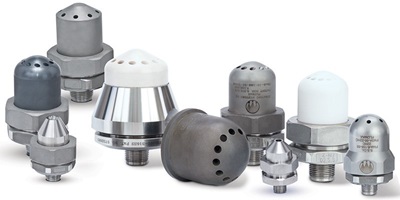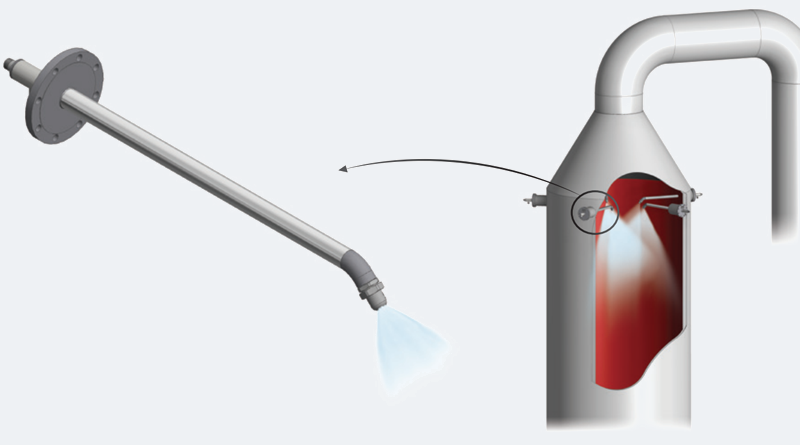A New England waste-to-energy plant wanted to reduce the amount of costly compressed air and maintenance its spray dryer absorber required. A difficult-to-spray lime slurry injected into the SDA tower scrubs acid and other pollutants from the plant’s exhaust gas stream. The previously used dual-fluid nozzle lances consumed a great deal of compressed air. Frequent nozzle maintenance was also a problem. Two maintenance workers spent as much as three hours every day on the difficult and dangerous process of removing dried slurry that continually built up on the nozzles.
AutoJet® Gas Cooling System

Spraying Systems Co. solved the plant’s problems with a Computational Fluid Dynamics (CFD) analysis and FloMax® anti-bearding nozzles. Creating a CFD model of the SDA tower provided a better understanding of the gas flow through the tower in order to optimize spray performance of the nozzle lances. Based on the predicted airflow in the SDA, four FloMax® nozzle lances were designed to generate the precise drop size required to optimize lime utilization and dryness while minimizing compressed air usage. The CFD model also determined the proper installation point for the nozzle lances, which were installed 34,1m above the base of the 45,7m tall SDA on 1,2m long lances spraying at specific angles. The FloMax® anti-bearding air caps have eliminated build-up on the nozzles, so daily nozzle maintenance is no longer required.
Result
Switching to FloMax® nozzle lances reduced the compressed air used for the lime slurry injection by 1147 Nm3/hr. That allowed plant operators to shut down a 200 HP compressor dedicated to the previous injection system, saving approximately €70,000 per year. Adding the €43,800 annual savings in daily nozzle maintenance costs provided a payback period of 15 months. Additionally, safety concerns for maintenance personnel are greatly reduced. From a sustainability perspective, the emission compliance rate is much improved and turning off the 200 HP compressor has significantly reduced energy use.


